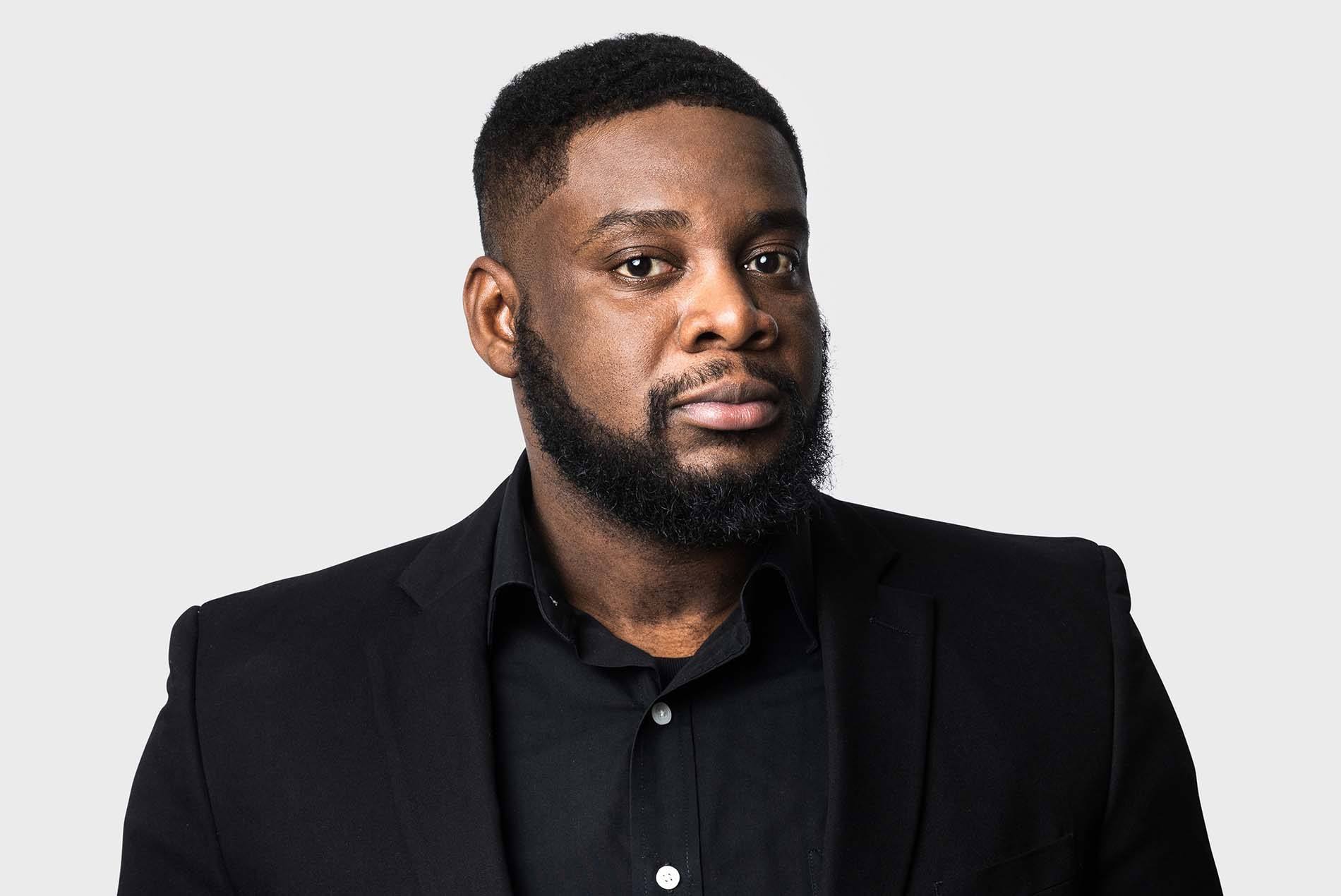Haitian-born architect Ralph Raymond, who immigrated to the U.S. with his family when he was two years old, is driven by a passion for innovation and equity in the architectural profession.
In 2015, at 26, Ralph Raymond, AIA, NOMA, NCARB, became Georgia’s youngest licensed architect. When he began his career at HOK in 2011 as a student intern, Raymond was still completing his bachelor’s degree in architecture at the Georgia Institute of Technology, where he later earned a Master of Architecture. In 2019, the Atlanta chapter of the American Institute of Architects (AIA) honored him with the John A. Busby Jr. Honor Award for Exceptional Young Architect. Today, Raymond serves as a project architect in HOK’s Atlanta studio and is the 2023 president of the AIA’s Georgia chapter.
Throughout his career, Raymond has been actively involved in both professional and volunteer organizations, including AIA, NOMA, NCARB and the ACE Mentor Program. Along the way, he has honed exceptional technical skills and contributed to notable Atlanta-area projects like the modernization of Hartsfield-Jackson Atlanta International Airport, the National Center for Civil and Human Rights, Correll Pavilion at Grady Memorial Hospital and the Porsche Cars North America Experience Center and Headquarters.
In this Q+A, Raymond discusses his motivation for joining the AIA, his objectives as local chapter president, the importance of public engagement and outreach, and the benefits of volunteering in professional organizations.
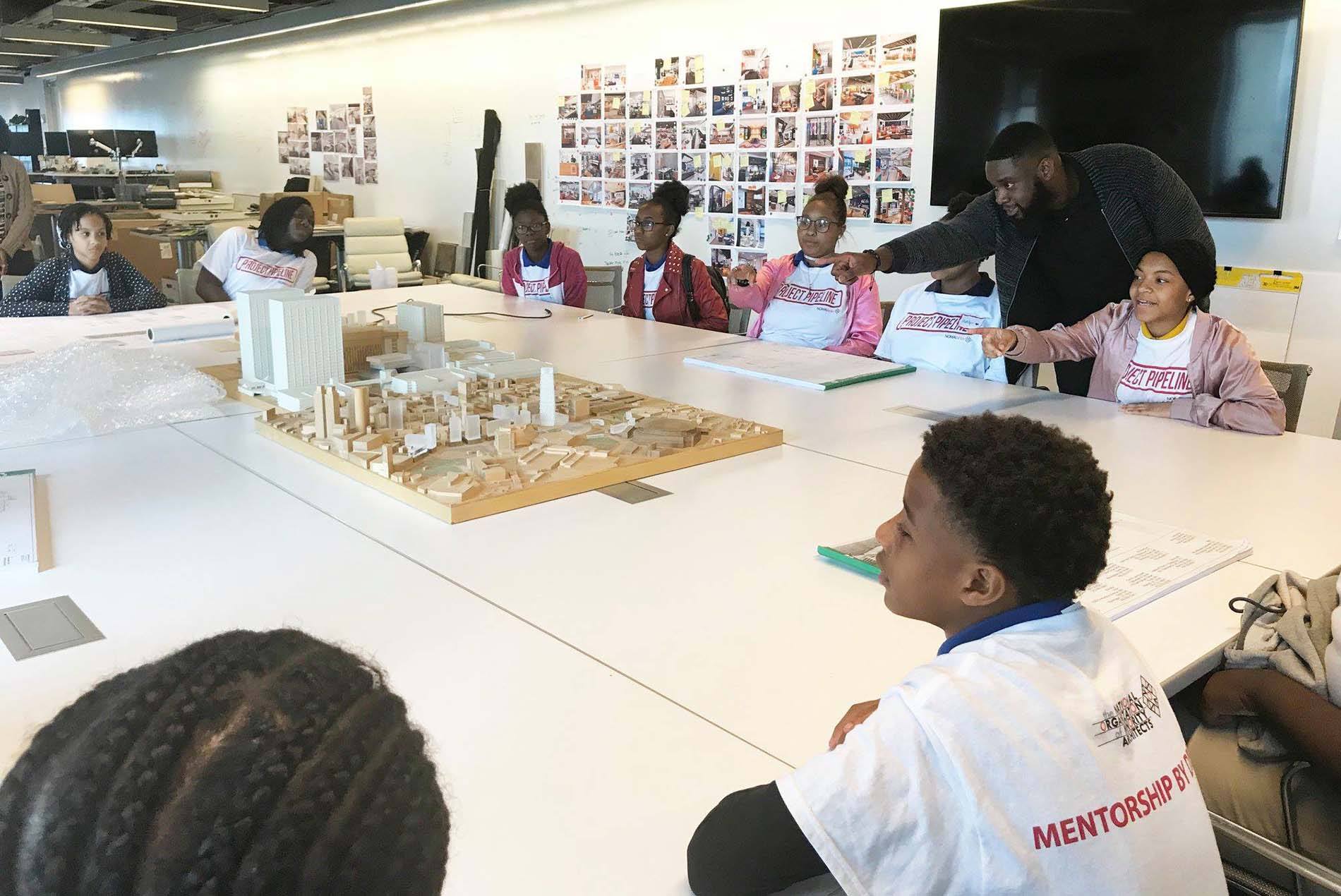
Mentoring young students as part of NOMA’s Project Pipeline
What inspired you to join the AIA, and what motivated you to serve as AIA Georgia’s president?
This is my eighth year serving on the AIA Georgia board and first year as president. I joined the Atlanta chapter of the National Organization of Minority Architects (NOMA) as a college sophomore as an avenue to gain a glimpse into professional practice with individuals more relatable to my lived experience. This ultimately spun into my joining the AIA Georgia board. As I delved deeper into NOMAtlanta’s mission and goals, I related to the more unified objectives we strive to achieve as architects. I was excited to provide representation that bridged NOMA, AIA and our collective missions. I soon observed that most architects serving on the AIA were more senior individuals who wanted to impact change later in their careers.
When a past president of AIA Georgia nominated me for president-elect, I realized that I, too, was embracing the idea that I had to work for a few decades before being able to contribute meaningfully in that position. To make architecture as sustainable and attractive as possible, however, all voices and perspectives, regardless of age or career stage, must be represented. So, I decided to show up and champion my generation during a time when our input matters most while we are still gaining experience. This way, we can elevate the conditions and state of the profession before passing the baton. While it’s great to offer insight on what could have been done better, it’s even better to run, not walk, with the baton and push those improvements ourselves so that progress can continue to build on our shoulders. I’m happy to say that Ai-Lien Vuong, a colleague in HOK’s Atlanta office, is one of our AIA Georgia board members.
The prior generation elevates the space and platform for each successive generation to build upon. If we don’t leave the profession in a better state than when we entered it, we limit the potential for future accomplishments.
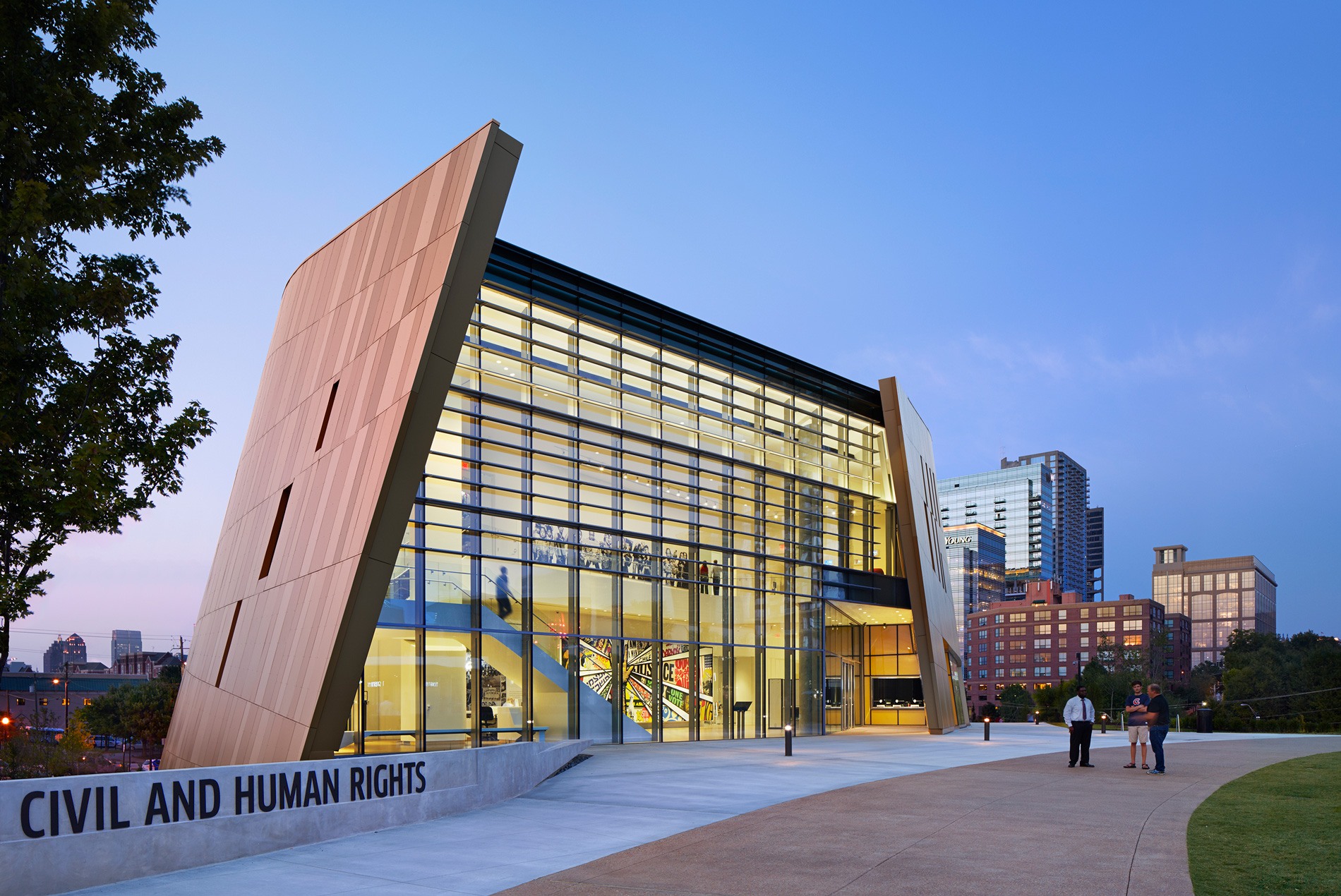 National Center for Civil and Human Rights in Atlanta
National Center for Civil and Human Rights in Atlanta
What are some of the major initiatives or projects you have worked on or hope to work on as president of AIA Georgia, and what impact will they have on your community?
During my presidency, I’ve made public engagement and outreach top priorities. How can we leverage our interactions with the general public, building owners and elected officials? How can we, as architects, interact and improve conditions for all? How can we make additional use of our skills in communities? These questions all cover our potential as “Citizen Architects.”
As architects, we have the power to improve conditions for everyone and serve as advocates for equity, social justice, sustainability and design in the built environment. That means encouraging our members to get involved in community planning units, attend city hall meetings, design affordable housing, engage with elected officials, serve on committees, write papers and articles, and share their knowledge to advance our progress. By encouraging and supporting more Citizen Architects, we can increase our impact and help our communities flourish with purpose.
Our plan in Georgia is to continue expanding our presence in the Capitol and work on policies that protect and empower our profession. We want to proactively shape the laws governing our work and enable us to make a positive difference.
How can the AIA continue to improve its public outreach and promote the architecture profession?
Engaging with communities and getting boots on the ground is the only way to make a meaningful impact. Local grassroots efforts, driven by shared geography, culture, race, nationality or other commonalities, provide a means of engaging with the public. As an organization, AIA must continue to equip architects with the resources they need to become better activists and subject matter experts when working with the public. Ultimately, it is the general public that we serve. We need to engage them on a local, intimate level, going beyond high-level policies and edicts. Our buildings affect many individuals, and we cannot ignore our responsibility to create a positive impact.
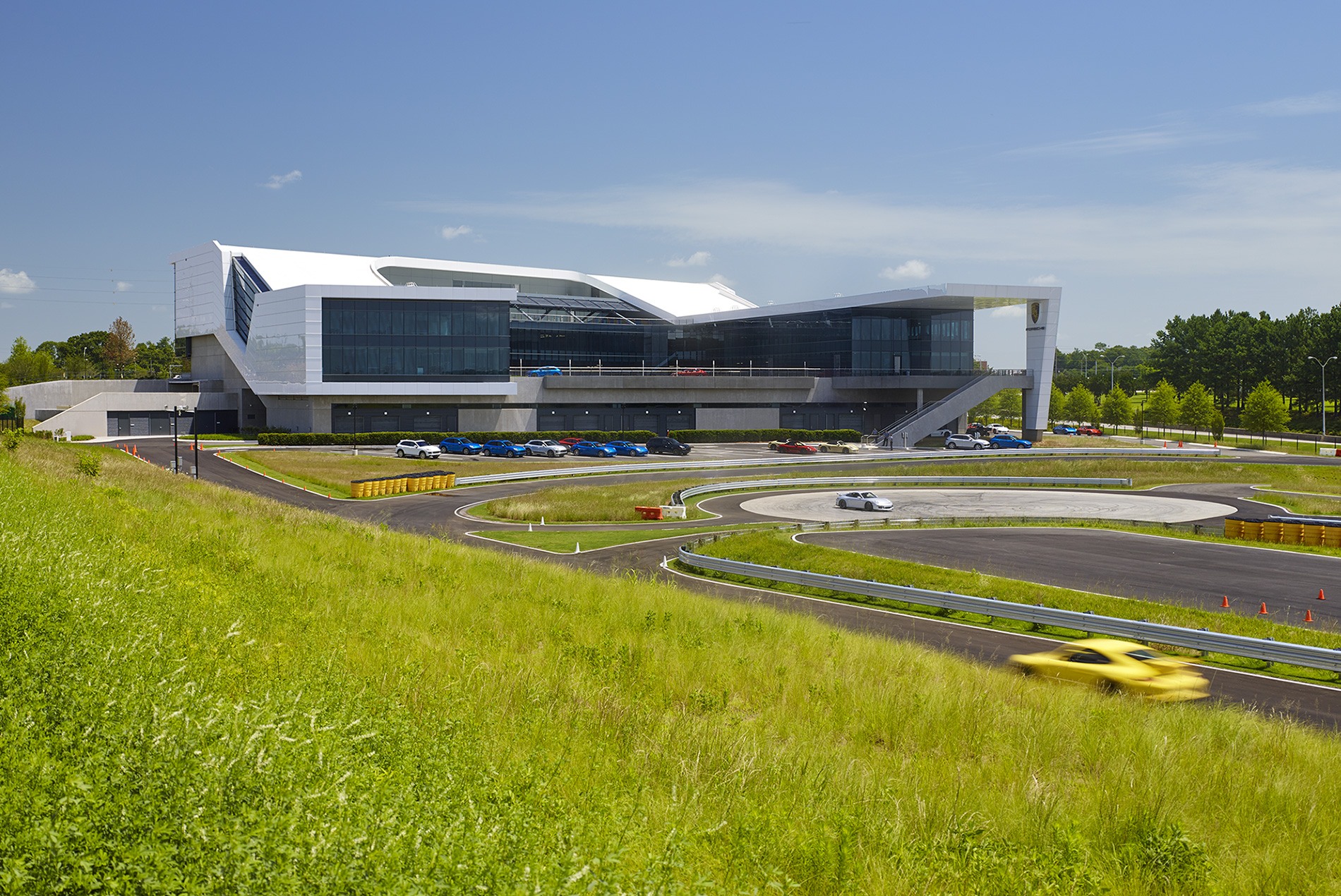 Porsche Cars North America Experience Center and Headquarters in Atlanta
Porsche Cars North America Experience Center and Headquarters in Atlanta
How has serving in a leadership role with AIA Georgia impacted your architectural career, and what skills have you developed through this experience?
The most obvious answer is that this leadership role has greatly expanded my network, connecting me with like-minded individuals who share my ambitions. Through my involvement, I have been presented with unique opportunities that I cherish, including the opportunity to share my ideas on a larger stage.
My participation has fueled my passion and reignited my interest in the profession. It has given me access to valuable insights and conversations and connected me with inspiring peers and mentors with whom I still engage to this day.
As a leader, I have learned to serve others by helping them achieve their goals and fostering better teamwork and communication among members. It has reminded me that no voice is too soft to be included in the conversation.
How do you balance your professional responsibilities as an architect with your volunteer work for the AIA?
I make space and time for each of them, as they should not compete. HOK’s Atlanta leadership is quite supportive of the many trips, programs and resources needed to fulfill my leadership position in AIA. As with our projects, the keys to balancing are compartmentalization, planning, programming and delegating the work. If it comes with a calendar invite, even better.
My work with AIA, NOMA, NCARB and HOK all make up what I consider my career. Each organization plays its part in how I relate to the profession and the work of architecture. I define myself as a professional through my involvement and contributions to these organizations. However, when I anticipate challenges in balancing my responsibilities, I usually frontload a great deal of preparation and effort to give me a strong head start. This way, when more pressing items appear, I have the leverage to focus on the priority at the moment.
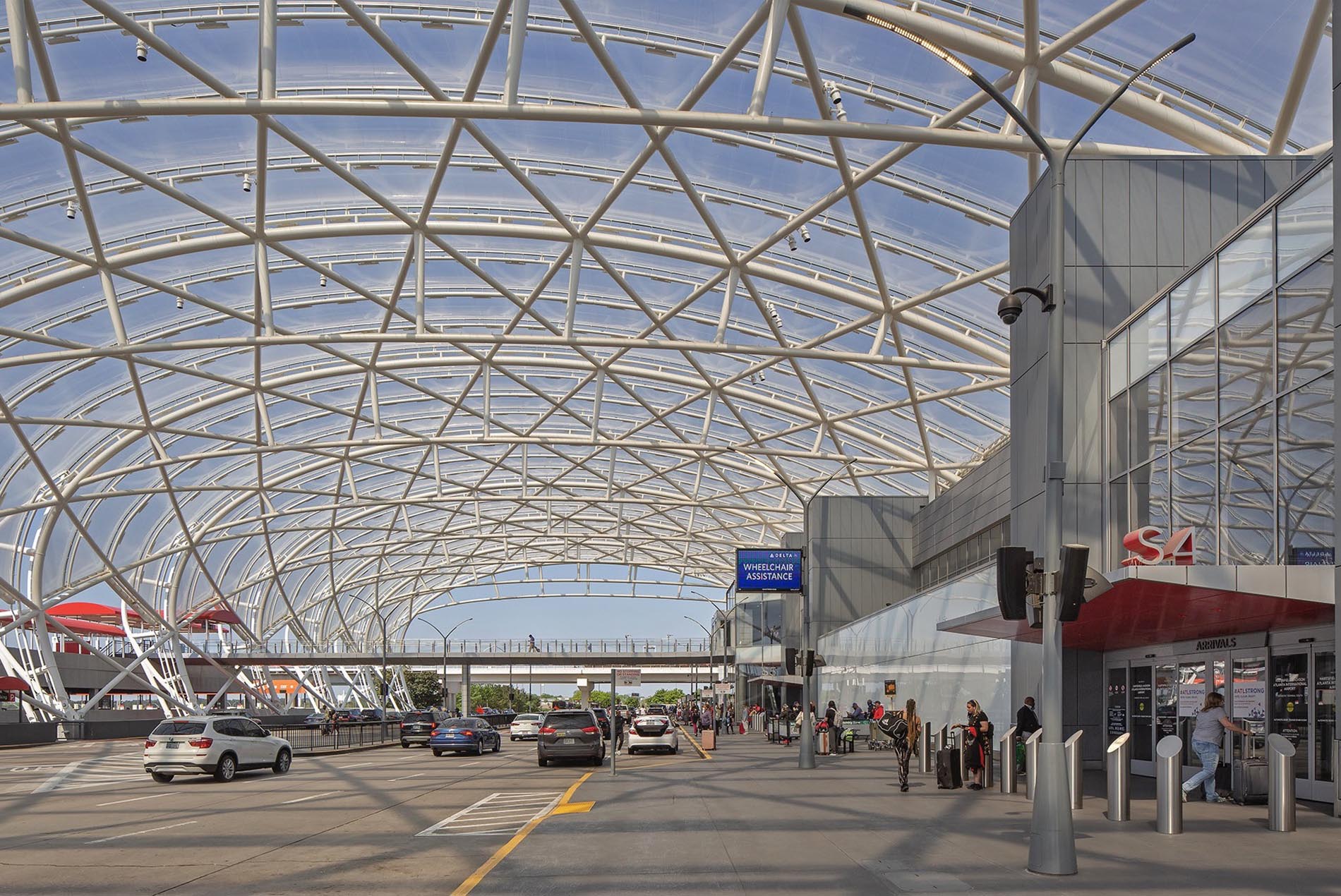
Hartsfield-Jackson Atlanta International Airport Modernization
What are the most significant benefits of volunteering and serving in organizations like the AIA?
The potential for impact is tthe most significant benefit of volunteering and serving in organizations like AIA and NOMA. As architects and designers, our work has a far-reaching impact on clients, communities, societies and the environment. By serving in these organizations, we can shape the direction and priorities of our profession and, ultimately, influence the built environment for the better. It’s up to us to rise to the occasion.
What advice would you give to other architects interested in volunteering or serving in leadership roles in their communities?
Start today! You don’t need to wait until you are seasoned, and there are enough items to tackle for all of us to lead. If you see you are not represented within a community or believe you have a perspective to offer, step up and help the entire profession and this community grow. Serving in leadership roles also helps you grow as a person. It is an open-source code that gives rise to ingenuity. In my roles, I have always welcomed those who want to serve and created space for them to do so. There is too much work to be done inside and outside the profession for us not to engage.
